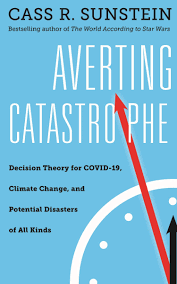Hopefully by now most of us realise that the mind versus body problem is a quaint notion from the past, when we mistakenly believed that our minds floated in some ether disconnected from the real world. The idea of embodied cognition, that the brain is in fact only a central switching point for the central nervous system to send constant feedback on where we are and what we are doing. We only learn and acquire knowledge through our body (via the senses), and we only experience the world, including emotions, feelings and experience, through this system.
In The World Beyond Your Head, Matthew Crawford takes this one step further in a fascinating read on the effect of our environment in shaping behaviour. Although his book is mainly about the problems of digital distractions and crowded environments, I found the most compelling parts of the book to be those on how the environment shapes our thinking. Matthew Crawford argues that mind and body are not enough, and that it is also the environment that shapes our thinking and behaviour, and that the three together are what makes us who we really are.
In fact, even more than this the environment and tools that we use help us to expand our abilities way beyond our natural talents. For example, when we use a computer or car, they become an extension of our body, allowing us to do so much more than we can with our body on its own. Matthew Crawford gives an even simpler example of a complicated multiplication problem, where just a simple pen and paper allows us to solve a problem that we cannot solve purely “inside our heads”. He describes the way that we “offload” problems on to the environment, or use what’s around us as a “scaffold” on which we can enhance our abilities with environmental props.
He describes this as “jigging” the environment (in effect, a self-motivated and self-implemented “nudge”) that can help us expand our abilities. For example, a skilled bartender can’t make up for the limitations of short-term memory but can “jig” the environment, by placing the right glasses in the right order on the bar as a customer gives him a large order of drinks, and then another customer gives an additional order. That way, he can help himself to remember what each drink was and in which order he should serve them.
Matthew Crawford also describes the importance of motion in enabling us to see the world and the way it changes around us. In fact, many argue that our brains (and those of other animals) only exist BECAUSE we need to move – something that plants don’t need to do. It has been shown that without motion, our visual sense cannot properly develop, and it’s well known that our peripheral vision is attuned to catch movement (i.e., threats) in the environment around us, something the right side of the brain is particularly adept at catching. Thus the still photo is not a good metaphor for how we see or how we think – the moving image is much closer.
This raises the possibility (perhaps the inevitability) that thinking has nothing to do with constructing representations of the world around us, but has everything to do with living and acting in that world and accumulating these experiences to gain knowledge. Knowledge is our experience (arguably with the addition of how we are able to synthesise what we learn to reveal patterns about the world). This argument goes back to J.J. Gibson and his views on perception, but is also consistent with many of the findings in robotics and artificial intelligence work. Rodney Brooks wrote that, “the world is its own best model”, and that much of the challenge in AI is that a smart computer is not enough, as intelligence comes from the mind, body and world working in partnership.
The way to become an individual in a world of digital distractions, is to get outside your head and into the real world.
REFERENCE
The World Beyond Your Head: On becoming an individual in an age of distraction by Matthew Crawford






